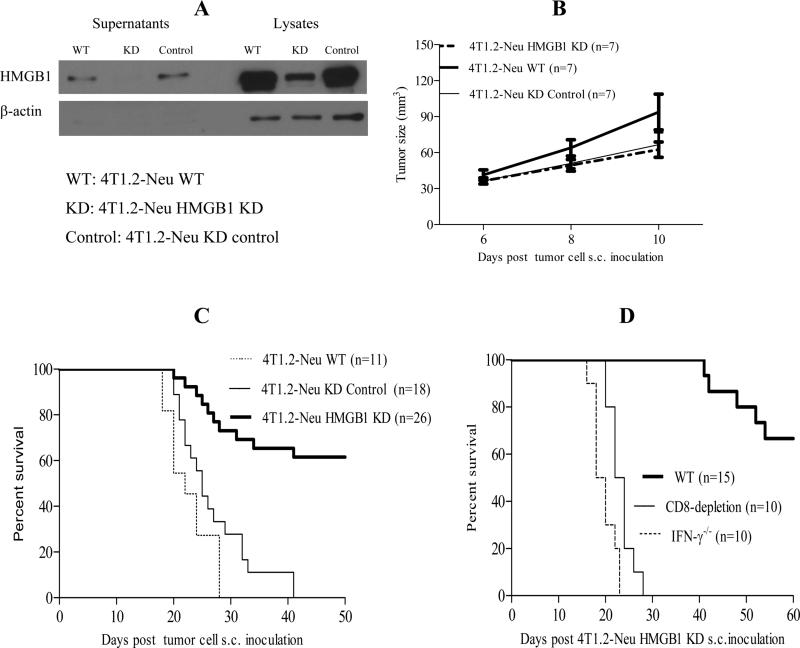FIGURE 4.
HMGB1 KD does not affect tumor growth but uncovers naturally acquired CD8 T cell- or IFN-γ-dependent antitumor immunity. A, HMGB1 KD in 4T1.2-Neu lysates or culture supernatants was confirmed by WB using rabbit anti-HMGB1 Ab, goat anti-rabbit poly-HRP (Cell Signaling Technology) and ECL™ WB Detection Reagents (GE Healthcare). β-actin was served as an internal control. One representative of three independent experiments is shown. B, BALB/c-WT mice (3-4/group) were inoculated with 4T1.2-Neu WT, HMGB1 KD or KD control on day 0. Tumor size was measured. Data are combined from two independent experiments. HMGB1 KD vs. WT or KD control: NS. C, BALB/c-WT mice (2-5/group) were inoculated with 4T1.2-Neu WT, HMGB1 KD or KD control on day 0. Data are combined from six independent experiments. HMGB1 KD vs. WT or KD control: p<0.0001, WT vs. KD control: NS. D, BALB/c-WT or -IFN-γ-/- mice (3-5/group) were inoculated 4T1.2-Neu HMGB1 KD on day 0. Anti-mouse CD8 Ab were injected into some WT mice on days -1, 1, 3, 6 and 9. Data are combined from three independent experiments. WT vs. CD8 depletion or IFN-γ-/-: p<0.0001. Animal survival is presented using Kaplan-Meier survival curves.

